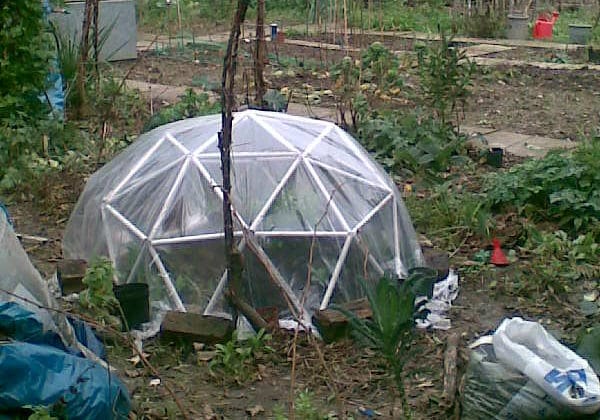If you’re new to greenhouse gardening, you’re probably thinking, “When should you plant in a mini greenhouse?” Greenhouses are a great tool every gardener and aspiring gardener should have.
One of the advantages of greenhouse gardening is the ability to grow crops all year round. However, you’ll need to pay attention to certain factors, such as lighting, watering, temperature, and the types of plants you want to grow.

You also need to adjust the conditions of our greenhouse depending on the current season, how much sunlight your greenhouse is getting, your USDA zone, and the vegetables you’re looking to grow.
So, the question is, when should you plant in a mini greenhouse?
Warm Weather Crops
For warm-weather vegetables, it’s best to start planting in March and April. These plants don’t thrive in frost, and most of them will germinate within one to two months.
If you live in colder or elevated areas where freezing temperatures often occur during spring, make sure to wait until early May; or until the last frost has passed. The best time to transplant warm-season crops is when the temperature reaches at least 70 degrees F.
Some of the warm season vegetables you can plant include legumes, tomatoes, vining beans, cucumbers, peppers, potatoes, corn, melons, peas, and squash.
Cool Weather Crops
The best time to start planting cool-season crops is early March. These vegetables thrive in temperatures ranging from 55 to 65 degrees F. You can transplant these plants in early April.
Keep in mind that cold-season and hardy vegetables take longer to germinate (7 to 12 weeks) compared to warm-season vegetables. Some of the best cold-season vegetables include broccoli, kale, celery, arugula, chard, and cauliflower.
Hardy Vegetables
You should plant hardy vegetables – or plants that can tolerate frost, in your greenhouse first in December or January. You can harden these plants by gradually exposing them to the outdoor environment for a few days. If you want, you can transplant them in your garden in February or March.
Some of the hardy vegetables you should plant include Swiss chard, beets, carrots, turnips, spinach, bulb onions, and leafy salad greens.
How Can You Protect Your Plants from Frost?
As we’ve already established, most plants cannot tolerate frost. Aside from placing your plants in a greenhouse, there are other ways to protect them from frost further.
Cover horticultural fleece
One of the ways to keep your greenhouse heated is to place one or two layers of horticultural fleece during nighttime. Remember to remove it in the morning to avoid overheating. Horticultural fleece is a great way to heat your greenhouse and save money on electricity.
Install a heating system
Another option is to install a heating system. Whether you plan to use space heaters or you want to install a larger one, make sure to keep them away from flammable materials. For proper installation, have it installed by a professional.
It’s best to contact an HVAC professional to determine the size and type of heater needed for your greenhouse.
Regardless of the route you choose, make sure that your plants are warm during winter nights. On significantly colder nights, it’s best to have added protection from frost.
Mini Greenhouse: Is It Worth It?
Short answer: yes. Most people think that having a greenhouse is a luxury. While there are expensive and luxurious greenhouses, there are affordable and high-quality options as well, like mini-greenhouses.
Here are some of the reasons why investing in a greenhouse is worth it:
An excellent option for beginners
A mini greenhouse is a great option if you want to know how greenhouse technology works before you purchase a bigger one. You can use it to see how a greenhouse works and how different crops thrive in an enclosed space.
Protect your plants from pests and animals
Harmful pests and animals can easily destroy months of hard work. Insects and critters want to munch on leaves and eat your crops. Protect your plants and crops by placing them inside a greenhouse.
Best for gardeners with limited space
Don’t let limited space stop you from growing your vegetables. Whether you live in an apartment or a one-room studio, you can enjoy the benefits of gardening by using a mini greenhouse. You can place them on patios, backyards, decks, balconies, and even tabletops. Regardless of its small size, a mini-greenhouse provides the same benefits as a regular-sized greenhouse.
Start planting early
As mentioned, you can use a mini greenhouse to start planting even before the cold season begins. Once the weather warms, you can then transplant your crops outside your garden. In this way, you’ll enjoy an earlier harvest.
Protect your plants from harsh weather
Aside from pests and critters, placing your plants in a greenhouse also protects them from harsh weather conditions. Rain or shine, your plants will grow just fine in a mini greenhouse.
The Bottom Line: When Should You Plant in a Mini Greenhouse?
When should you plant in a mini greenhouse? With one, you don’t have to worry about bad weather and changing seasons because mini greenhouse planting allows you to grow vegetables and other plants all year round!
